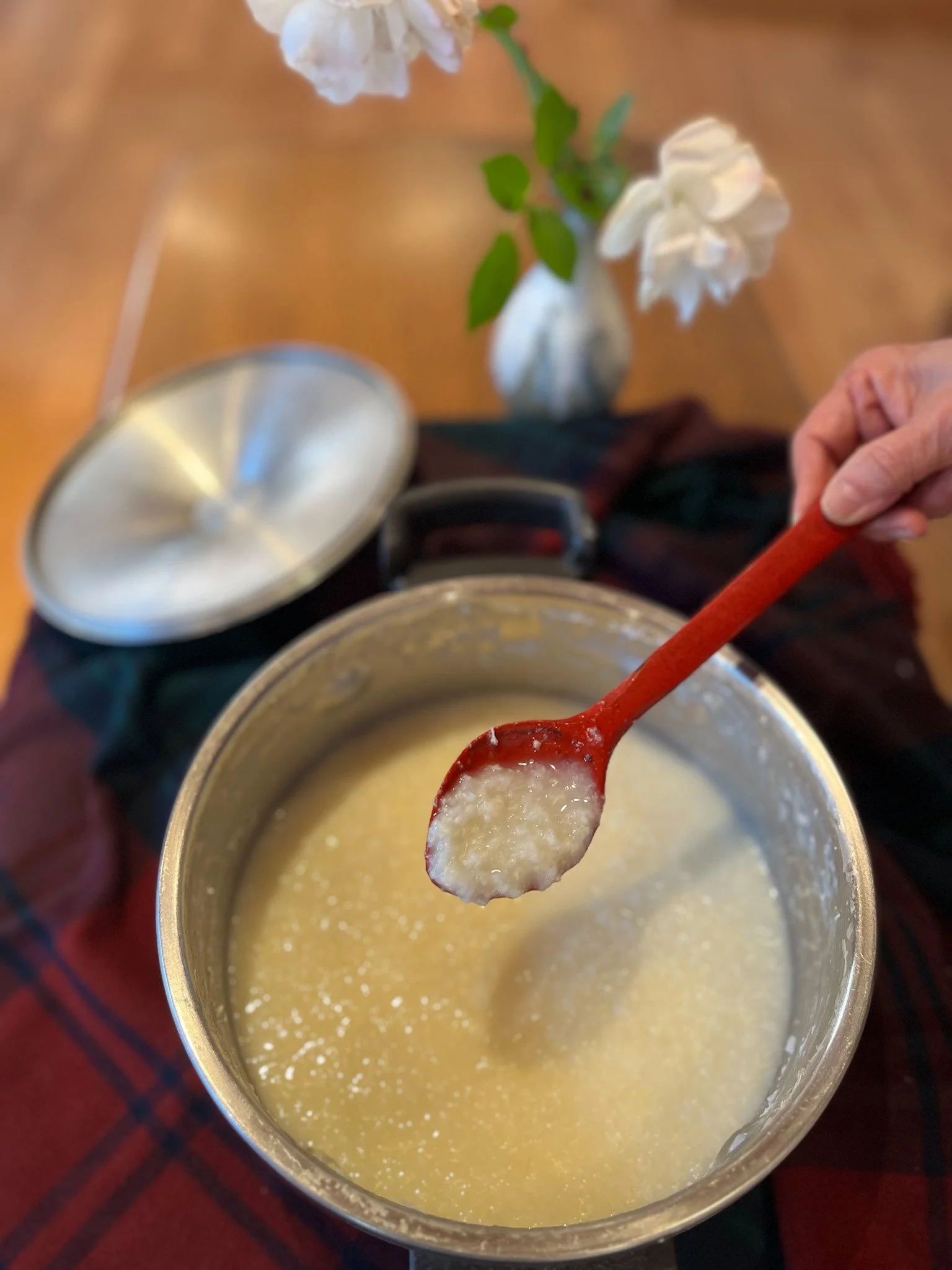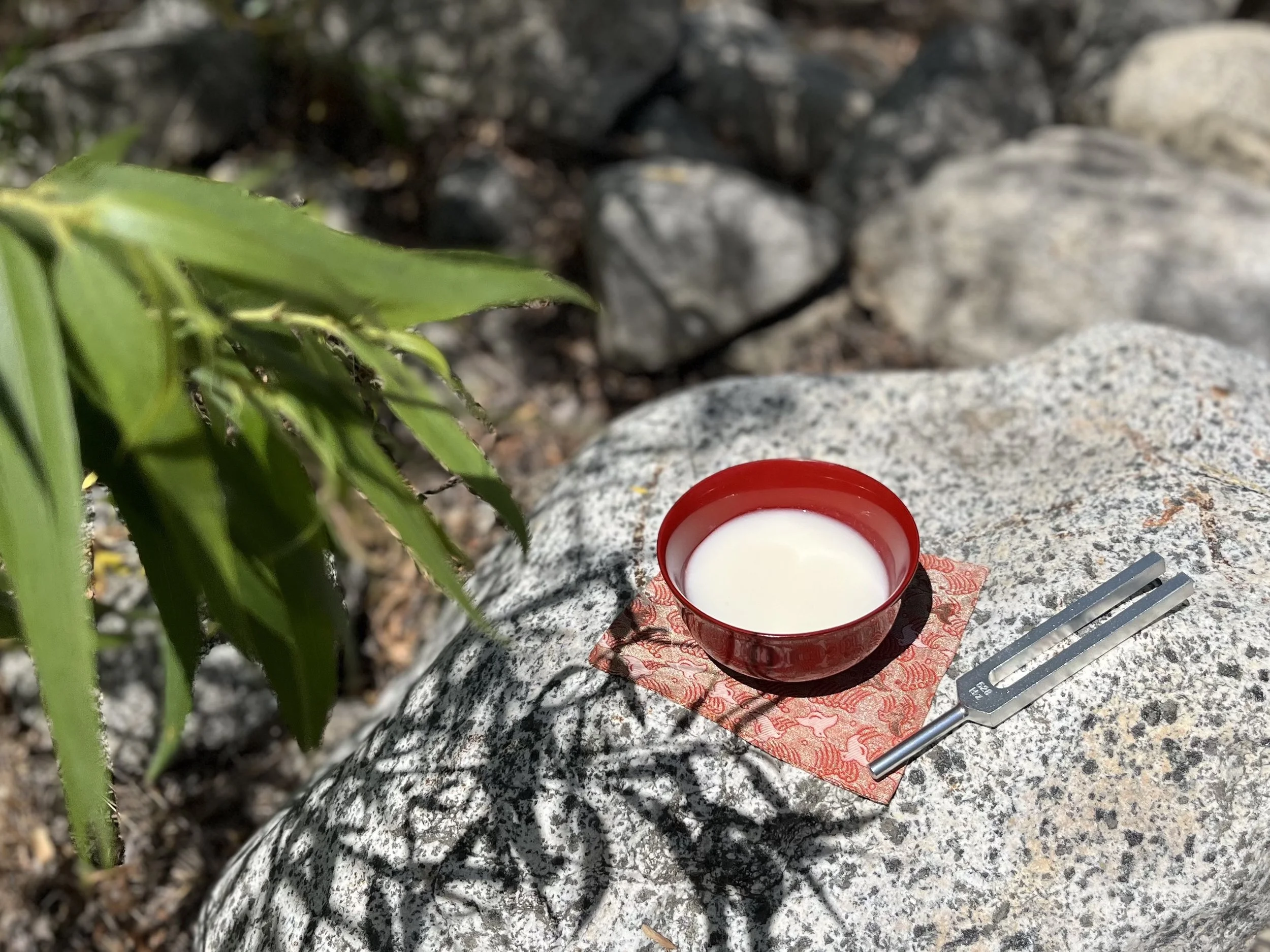Start Here
1. When you get home with your Miki, open the lid and loosely cover to allow it to breathe. If kept sealed too long, it can build up pressure inside and overflow or can get alcoholic.
2. Keep it refrigerated with a loose cover or cheese cloth on the top. It shouldn't go bad if left at room temperature. It will accelerate fermentation, making it go sour faster.
3. OR freeze if you want to preserve longer and suspend its fermentation.
Enjoy!
For more specific questions and answers, read on.
FAQs
-
I would recommend finishing the jar within approximately 2 weeks from opening. It will still continue to ferment slowly in the refrigerator and become tangy over time. If it smells or tastes bad, please discard. If kept properly, Miki can last months and years in the refrigerator unless it gets contaminated.
-
There is no specific recommended dosage since this is not a supplement. You may start with a few tablespoons or half a cup a day. Your body will know how much or when it wants. Please do use your common sense. If you have sensitive stomach, do not drink cold Miki in a large quantity like you wouldn’t drink a glass full of iced water. Start slowly if you are new to fermented food.
-
Anytime! I like to take it in the morning. I sometimes take it during the day when I need an energy boost or even before bed to feel relaxed. To help your digestion, you can try taking some Miki with a meal.
-
Yes! If you freeze, it will suspend the activity of the probiotics. It will last much longer without getting sour. Please defrost at room temperature or inside the refrigerator. Do not microwave or use heat to defrost. Probiotics will die beyond 122 degrees (50 celsius).
-
It can happen. That is why Miki should only be filled up to half or 2/3 of the container. Miki needs to breathe. If you keep the lid tightly sealed, pressure can build up inside the jar, and pop when it wants to. To prevent this, please loosen the lid at all times inside the refrigerator and stir once in a while to let the air out. Exposing Miki to air will also prevent alcoholic fermentation.
-
You can eat/drink Miki like yogurt. Put it in your smoothie, eat it with fruit, make yogurt, use it in your baking or cooking (soup, dressing, etc). Possibilities are endless! Be creative! When you use heat, the enzymes and probiotics in Miki will die. However, it will still feed the good bacteria in your gut.
If you'd like to learn various recipes and uses of Miki, check out the upcoming classes with Tomoko.
-
Miki is considered safe for people of all ages, and is recommended especially in times when you need extra energy for performance or recovery. It is gluten-free & plant-based and is gentle to digest. Everyone is different. Please listen to your own body. Consult your doctor if you have concerns.
Additional information and tips about Miki
Miki is a traditional fermented drink, not a supplement or medicine although it has been passed on as a form of prayer or community service by the priestesses, and has been reported for its remarkable health benefits.
If you have health concerns, please consult with your doctor. If you’d like to try, please do so at your own risk.
Tomoko is a certified Miki instructor/evangelist, the first and the only one in the U.S., trained with her teacher Masayo Tamachi. For Miki to become potent and tasty, it does require not only the knowledge or skills but also absolute purity in its intention and good microbiome. You’ll be surprised when you taste Miki made by different people, each one tastes completely unique…Well-made Miki will last months and years without going bad, keeping its freshness and consistency. If not done right, it will smell and look noticeably terrible. Or even if it’s not molded, it will taste strange or feels dull. Good Miki has apple or grape like aroma and subtle tangy and fizzy taste. Most people feel instant uplift with a spoon full of Miki.

